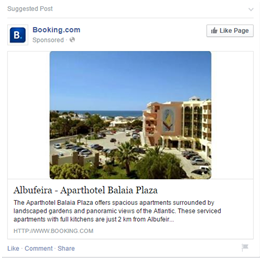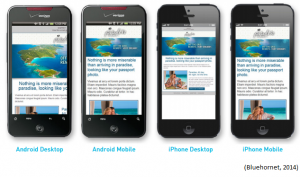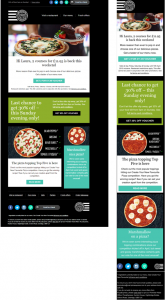An e-mail address is usually individual thus making it more common to a mobile number than a post code. E-mail addresses can be linked closely to the customer lifecycle using response data alongside Recency, Frequency & Monetary (RFM) data (Roe, 2011). Every e-mail sent to potential, existing, or previous customers is an opportunity to provide value and possible sales conversion. This blog will look at the conversion cycle using ASOS as an example with the use of their e-mails.
1. Incentive E-mail
According to Neely (2014) incentives can help to double opt-in rates and personally, they help persuade me to make a purchase! Incentives should be relevant to the user, valuable and easy to digest. The table below shows various incentives you could use:
So onto ASOS… I receive frequent incentive e-mails from them which is the start of the lifecycle.
This particular e-mail caught my attention. The Call-To-Action is clear- there is a sale on so view it! Having looked on the website and not purchasing anything immediately, I was actually sent a follow up e-mail offering an extra 10% off sale items. This then lead to placing an order.
2. Order Confirmation
After placing an order, an e-mail is automatically sent confirming the details of this. According to Marketing Metrics (2010, cited by Return on Behavior 2010) the probability of selling to an existing customer is 60 – 70%, which means once a customer has made a purchase, they are more likely to place another order. This could be encouraged by including a promotional code for their next purchase for example. ASOS give the details of the order but do not offer anything extra but they include their social media links in the hope of attracting more followers.
3. Despatch Confirmation
During the despatch confirmation, a link is presented to entice the customer to look on the site in the hope of placing more orders! There is also the option to track my order at this point. To be more personalised, ASOS could recommend items to go with those already ordered in the hope of encouraging more sales from existing customers.
A successful despatch e-mail should:
• Allow for easy tracking of the order
• Suggest potential items for future sales
• Allow an option for recommending to a friend
4. Local Delivery Courier Confirmation
5. Delivery Confirmation
The last two e-mails have been sent on behalf of ASOS by the courier company Hermes. This improves customer service as I like to know when I am likely to receive my delivery and if I am out I like to know one of my housemates has signed for it! Being able to track my order from despatch to delivery helps build my trust with the company as I know my order will actually be delivered and I know exactly where it is. With these little extras, they all help to make me want to shop with ASOS!
Improvements
According to Baymard Institute (2014) 67.45% of online shopping carts are abandoned. I think ASOS could benefit from sending an extra e-mail to their users reminding them of the content they added to their basket and abandoned. New Look do this and it actually does work as often I add items to my basket then forget to checkout as I get distracted doing something else!
Pointers for shopping cart abandonment e-mails:
• Clear Call-To-Action to encourage click through rates
• Main message in text format, as some servers block images
• Remind the user of the items they wished to purchase
• Remind the user of any incentives i.e. sale, free delivery, money off
(Macdonald, 2013)
Mohammadi et al. (2013) emphasise on the importance of using all the customer information available to focus on personalisation so the customer is more engaged with the e-mail and can actually relate to the content. ASOS do not personalise their e-mails with all the information available as for example, they never use my name and when companies use personalisation it makes me feel like the e-mail is intended for me and not just a generic one. Therefore when creating a e-mail campaign consider what information about your customer you have and how you can use this to build a good relationship.
For further reading, Roe (2011) looks at the five steps of a e-mail life cycle (http://bit.ly/1J8dqCh).
References
Baymard Institute, 2014. 29 Cart Abandonment Rate Statistics. [Online]
Available at: http://bit.ly/1Gw6xHh
[Accessed 26 April 2015].
Macdonald, M., 2013. 4 Ecommerce Transaction Emails You Should Be Optimizing (And How to Do It). [Online]
Available at: http://bit.ly/1JIEpB3
[Accessed 26 April 2015].
Mohammadi, M., Malekian, K., Nosrati, M. & Karimi, R., 2013. Email Marketing as a popular type of small business advertisement: A short review. Australian journal of basic and applied sciences, 7(4), pp. 786-790.
Neely, P., 2014. Using Incentives to Grow an Email List. [Online]
Available at: http://bit.ly/1Dnzu4M
[Accessed 23 April 2015].
Return on Behavior, 2010. 50 Facts about Customer Experience. [Online]
Available at: http://bit.ly/1EuLm95
[Accessed 26 April 2015].
Roe, T., 2011. The five stages of the email lifecycle. [Online]
Available at: http://bit.ly/1J8dqCh
[Accessed 21 April 2015].





























